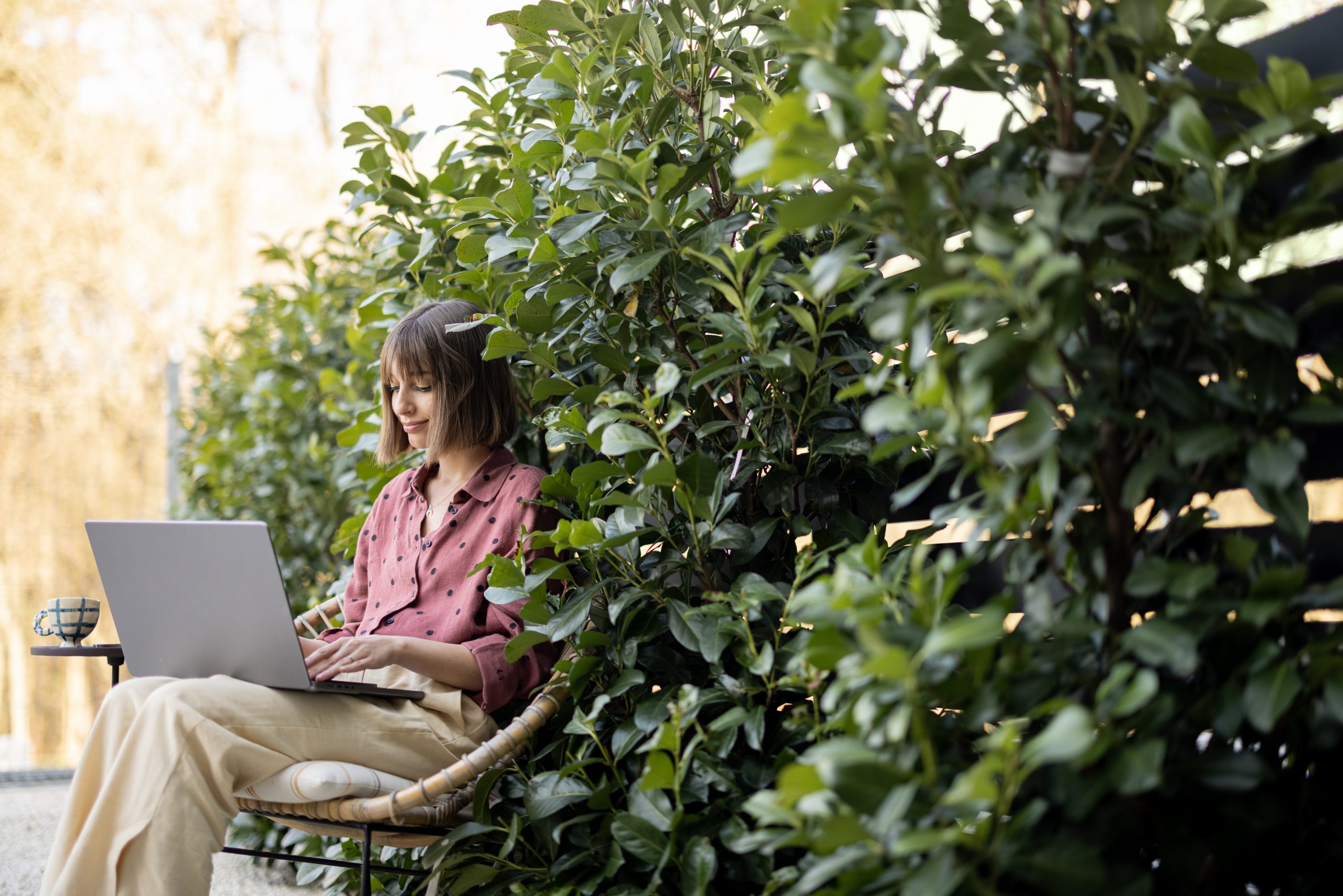5 ways to successfully design your outdoor spaces
Terraces, decking, patios, balconies or roof terraces, are you fully taking advantage of your company’s outdoor spaces? When well-designed, an outdoor space improves the quality of life at work (QVT), enhances the organisation’s CSR policy1 and beautifies its buildings. Here are some ideas to explore to make your project a reality.
1. Relying on the characteristics of your outdoor space
The first step in designing an outdoor space is to take stock of the area to be designed. The questions to ask concern several elements:
- Sunlight
- Exposure to the elements (rain, wind…) and noise
- Available space
- Access
- Number of people who will use the place on the same day and simultaneously
- The style you want to give
The constraints thus identified allow you to choose suitable outdoor furniture and equipment. Materials such as aluminium or resin, for example, are weather-resistant as are certain wood types. They also add a touch of warmth and nature to the space. To add a touch of comfort, it is possible to provide cushions which, if made with a waterproof textile, offer a satisfactory lifespan, even when left outdoors.
A sunny spot all year round can be equipped with a shade canopy which makes the outdoor space usable during the nice days. An area that is only sunny part of the day should rather be equipped with a parasol to unfold on demand. For a place located near a source of noise (road, production machines…), there are technical solutions (sound panels) or natural ones (green wall, hedge) to reduce this nuisance. It is also possible to build what is called an “outdoor room”, or a garden room in the middle of your outdoor space.
2. Creating a durable and safe design for your outdoor space
The outdoor layout and landscape design project integrates into the company’s sustainable procurement policy. It is then necessary to identify suppliers committed on a social and environmental level. The company must choose products with recognised environmental certifications or labels. The quality of furniture and equipment is significant since things that last over time require less frequent purchases. The benefits are therefore positive for the company’s CSR commitment and for its budget management. Products that are easy to maintain and repair are also more sustainable over time.
Favouring a durable layout also means doing everything possible to make your outdoor space a lever for quality of life at work. Risk prevention must be applied there as in any other part of the company. It is notably necessary to look at the pedestrian routes leading to the
space in question. Risks can also come from exposure to pollutants, noise, etc. Each source of risk must be identified and appropriate measures put in place.
3. Giving one or more functions to your outdoor space
Another avenue to follow is directly inspired by the great decoration principles. It is about giving a function to this outdoor space. It could be an outdoor dining area for lunch, in which case picnic tables are welcome as well as bins. If employees are going to spend time there during their breaks looking for a cosy relaxation space, it may be interesting to opt for garden and patio lounge furniture, such as outdoor couches, a fire pit, etc. If the space is for smokers, ashtrays must be installed.
The same outdoor space can also take on several functions throughout a day, depending on the season or depending on the people present. It must then be thought of as a versatile place capable of accommodating enough people. One solution to make it a comfortable place, suitable for having a coffee or lunch and occasionally hosting many people, is to provide high tables and chairs.
Lastly, the outdoor space can serve as a full-fledged workspace in companies that embrace a flexible working environment. A good internet connection and suitable furniture are then required.
4. Integrating plants
Adding plants is essential for designing an outdoor space. Urban furniture is more likely to be used by employees if it is located in a pleasant and shaded setting. Creating a green space can range from installing flower beds or a hedge or fencing to a vegetable garden which, when cultivated, can be a source of cohesion within teams.
Companies that take their CSR mission to heart now ensure they space out mowing or practice differentiated mowing, which leaves areas where taller grasses can provide habitat. They also reduce their watering needs in the process.
Creating a garden with plants and flowers is not only aesthetic, but also beneficial for pollinators such as bees. Some organisations even call on beekeepers to install hives. Green spaces in companies also contribute to lowering the temperature in the premises and can provide natural screens.
Plants should also be seen as allies of quality of life at work. Thanks to the presence of a vegetable garden and a composter, employees can benefit from the virtuous effects of gardening on well-being.

5. Consulting your employees
To ensure that the creation of this new outdoor living space corresponds to the aspirations of the teams, it is best to ask for their opinion. They will not be able to make the most of spaces that do not meet their needs. At a time when remote working has become more widespread, it is crucial for internal cohesion to create spaces conducive to strengthening the social bond.
Involving employees in the design process can lead to creative solutions, a source of motivation, and therefore increased productivity. Some may want to play a team sport during their break. It is not uncommon for companies to have a basketball or tennis court, for example. By allowing employees to contribute to this project, the buyer or project manager enables them to better appropriate the future space. The goal is to make the outdoor space a full-fledged professional living space that reflects the company’s values.
The world of work is undergoing major changes due to evolving practices and new possibilities offered by digital technology. Management styles and workspaces are evolving to follow the movement.
To learn more about the topic of new work practices, download our white paper on corporate social responsibility.






